Interconnector row rumbles on as pylons 'walk over the will of the people'
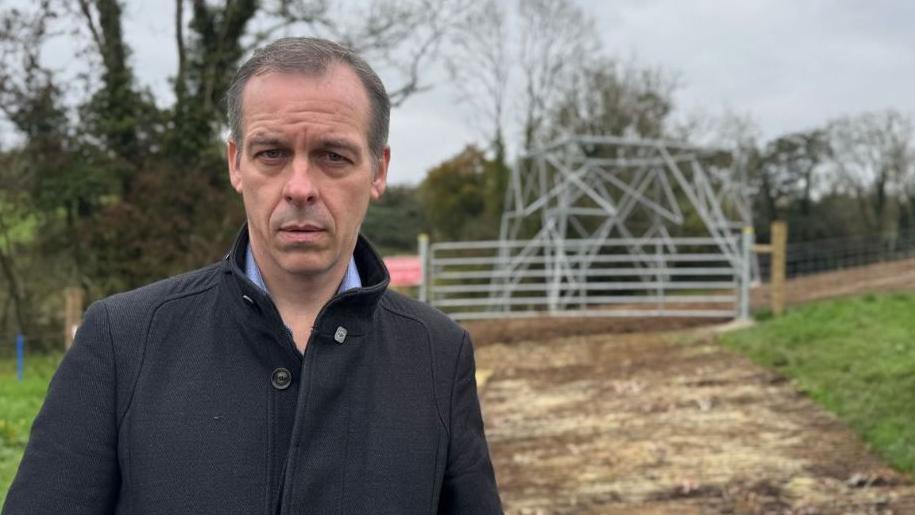
Restaurateur Kevin Redmond said he would "never stand in the way of development" but that the interconnector is a contentious issue
- Published
Developers constructing a major electricity project that has faced two decades of delays are "walking over the will of the people" in going ahead with new pylons, a resident near the Irish border has said.
Kevin Redmond, whose home in County Armagh is near where the north-south interconnector pylons are being built, said the issue is still "contentious", particularly as many locals want the infrastructure built underground.
The cross-border project, with an estimated cost of €350m (£300m), aims to improve electricity efficiency and lower the cost of generating power.
The System Operator for Northern Ireland (SONI), which is responsible for the scheme's planning, said it is vital.
It said the interconnector would enable Northern Ireland to meet its climate change targets, secure additional clean renewable energy and help meet demand "associated with economic growth".
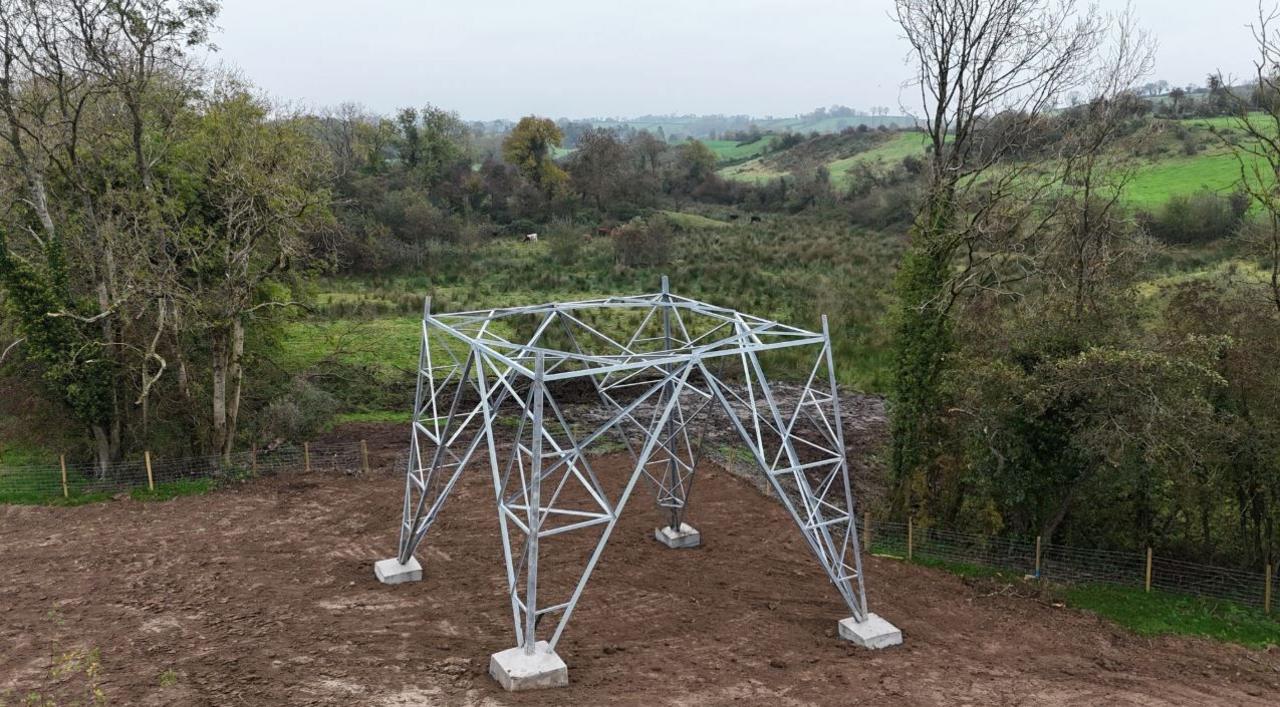
Construction of a new pylon began about two months ago near Mr Redmond's home in Middletown, County Armagh
It said the project will "strengthen our regional security of supply, while also delivering estimated savings of circa £19m per year for Northern Ireland consumers".
Northern Ireland Electricity, which formally took over construction of the project in 2024, confirmed building in the scheme's initial phase is under way.
However, the project, first announced in 2006, has been delayed over significant local opposition and numerous legal challenges.
Despite planning permission being granted five years ago, opposition group Safe Electricity Armagh and Tyrone (Seat) has lodged two legal challenges in the last six months to the decision by the Department of Infrastructure (DfI) - the most recent one came just a few days ago.
It's the latest legal twist in a story that has seen previously granted planning approval being quashed in the courts.
Meanwhile, preparatory work and pylon construction is going ahead for the 138km of high-voltage electricity line that will stretch from County Tyrone, in Northern Ireland, to County Meath in the Republic.
Mr Redmond saw this up close when trees were cleared from a neighbouring field before contractors began building the pylon about two months ago.
What is being built for the north-south interconnector?
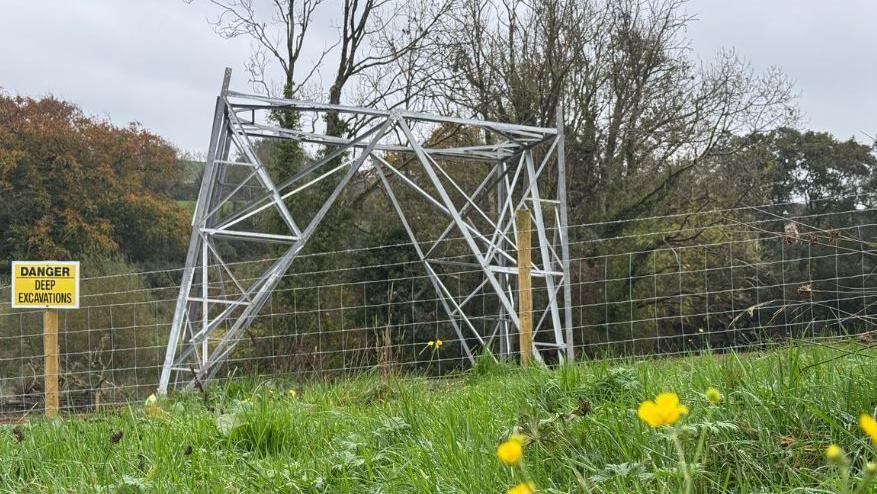
The project, first announced in 2006, has been delayed over significant local opposition and numerous legal challenges
"It's very close to my house, about 100-150 yards, you can see it right from my kitchen window," he said.
"There was no consultation with anybody, no-one came to speak to us, the work just started, and it's obviously part of the north-south interconnector," he said.
SONI said the project had been subject to multiple independent reviews and legal challenges, including two public inquiries by the Planning Appeals Commission (PAC).
BBC News NI understands this is the first of six pylons to be built as part of the northern section of the project.
Mr Redmond said he would "never stand in the way of development", but maintained the project is a "contentious issue".
"I would be very passive, but I can assure you there would be many people who would take a very different attitude to machinery moving in or a steel structure just appearing," he continued.
"This was always a project that could be underground, and it goes back to this issue of not listening to the people, and it is the solution."
Your questions answered on the long delayed north-south power project
- Published2 November
North-South interconnector report backs above-ground pylons
- Published22 March 2023
Cross-border electricity connection approved
- Published14 September 2020
Renewable energy production falls in Northern Ireland
- Published7 March
Opponents to the interconnector have long called for the required infrastructure to be built underground, with much of their disagreement centred around the effect large pylons will have on large areas of the countryside.
However that option has long been dismissed.
SONI said it would be "both technically very challenging and exponentially more costly than the standard overhead line, which has received full approval from planning authorities".
'Insatiable energy demand' from Dublin
John Woods, from campaign group Seat, has been active in opposing the interconnector for 19 years.
"The reason why we object is that Northern Ireland will not benefit whatsoever," he told BBC News NI.
He believes the push for the interconnector is "to feed the boom in data centres in the Republic of Ireland", which is "totally out of control in using up all the power".
Power is "being taken cheaply from Northern Ireland and feeding into an insatiable demand in Dublin", he added.
He also believes local people are being treated unfairly by "ongoing attempts to get access to private land in order to construct unnecessary and unwanted huge pylons" which "blight the landscape and damage the environment".
A spokesperson for SONI said the interconnector "is vital for enabling Northern Ireland's legal decarbonisation targets under the Climate Change Act".
They also said the project would reinforce the power grid to "accommodate increases in demand in Northern Ireland associated with economic growth".
The spokesperson added that it would "remove significant constraints", allowing Northern Ireland "to use more renewable electricity it already generates" and will allow the power to be imported during periods of high demand, and exported when demand is low.
However, despite work being under way in view of his kitchen window, Kevin Redmond is unconvinced that the pylons will ever operate as an interconnector.
"The likelihood of this happening and getting finished, if you ask me, is quite low."
What is the north-south interconnector?
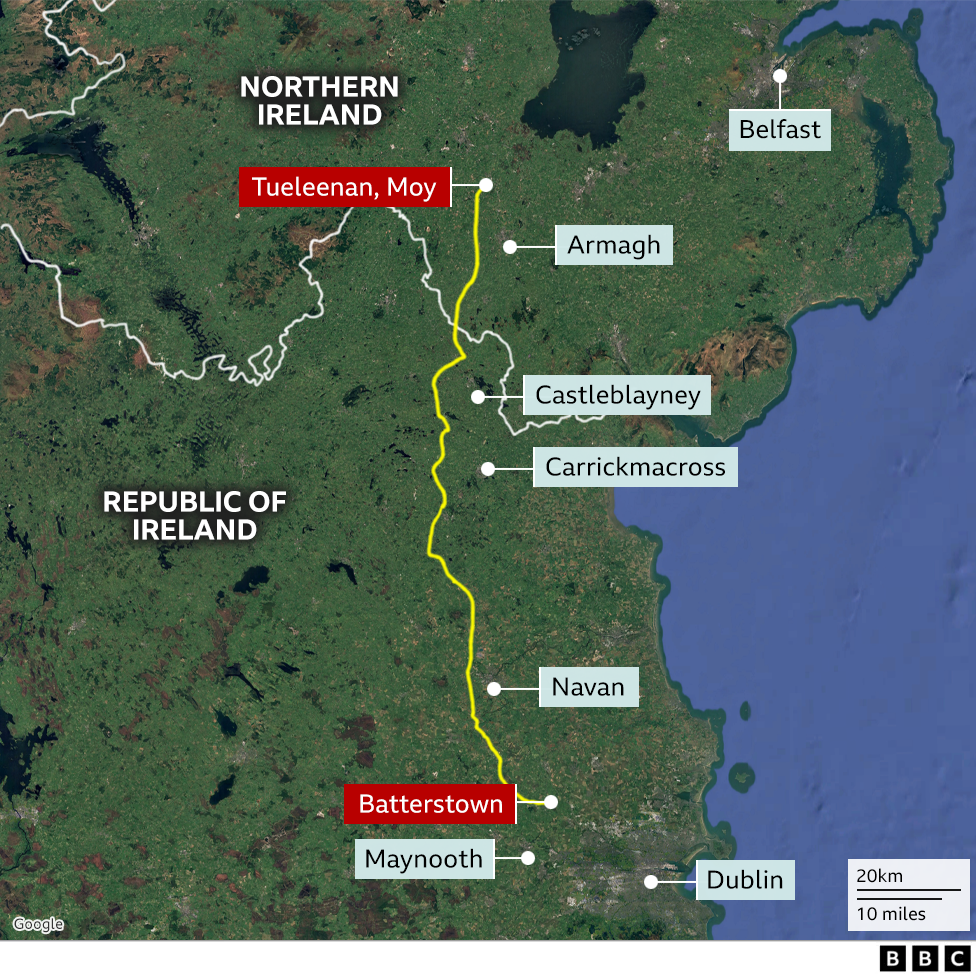
The route of the proposed north-south electricity interconnector
The interconnector was first conceived in 2006.
The project will see overhead electricity line stretching from near the Moy, in County Tyrone, to Batterstown in County Meath, connecting the power grids of Northern Ireland and the Republic of Ireland.
The southern section of the project was first granted planning permission in the Republic of Ireland in 2016, with the northern part getting the green light in 2020.
It has however faced multiple legal challenges since then, with environmental opposition in a number of counties across the island of Ireland.
There have also been a number of challenges to the proposal of the pylons being overground, rather than cables being ran underground.
Related topics
- Published12 June 2023

- Published26 March 2024
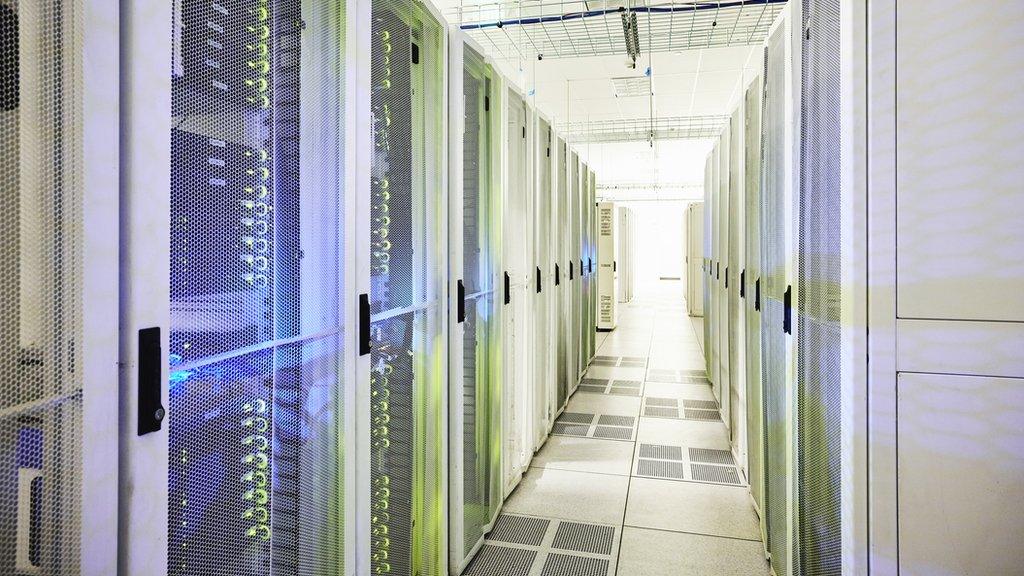
- Published23 February

- Published6 October 2024
